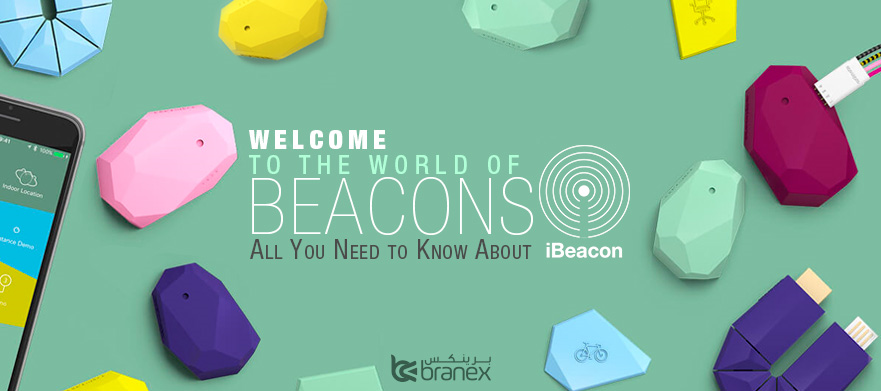You go to one of the biggest retail stores in your vicinity to make good on your monthly groceries. You have a long list of items to purchase but being pressed for time, you are fretting over the impending hassle of scouting out isles after isles, looking for each one. Unfortunately, you do not have any choice but to pick up each item one by one. As a result, you end up spending one extra hour at the grocery store than you intended to.
Have you ever wished that your mobile devices could communicate with objects inside a grocery store and make your shopping experience a whole lot easier? Perhaps a simple “Accio cereal” would make your rice crispies fly right out of its shelf at the opposite corner of the store right into your cart? If yes, we have some good news for you.
Apple has granted you your wish by introducing a game-changing technology known as iBeacon. If you are interested to know what it is, how it works, and how it stands out from other technologies available in the market, you are about to get your curiosity satiated. This article instills in you everything you need to know about iBeacon, the latest sensation in device-to-object communication and location-based services.
What is iBeacon?
iBeacon is a stellar protocol developed by Apple. Multiple vendors started creating compatible hardware transmitters known as Beacons. These beacons are Bluetooth low energy (BLE) devices that communicate identifiers to mobile devices in their proximity. Your mobile devices can automatically take the pertinent action as soon as they identify a beacon within their radius.
iBeacon technology can also be used as an indoor positioning system, which can accurately provide the precise location at the building level and deliver hyper-contextual content. Despite being developed by Apple, iBeacon technology also supports Android, which is a great news for millions of Android device owners.
Related: Gain Deep Insights from the Future Tech Week (GISEC/GEMEC/IOTX) – Dubai 2018
What Makes iBeacon Stand out from the Crowd?
There are a plethora of location-tracking systems out there but none like iBeacon itself. What makes iBeacon stand a head and shoulder above others is its ability to track location inside buildings with high accuracy. This is where all other location tracking systems fail to deliver. Moreover, it consumes lesser energy as it capitalizes Bluetooth Low Energy (BLE) for communication.
How does iBeacon Work?
In order to leverage the iBeacon technology, you need to understand how it works and what you need to make it work. Here are three things to help it function properly:
- An app
- A Beacon
- A User
1. An App
To implement this burgeoning technology, you need to invest in mobile app development. You need a mobile application that can act as a bridge and help your mobile devices communicate with a Beacon. The ShopKick’s customer rewarding app known as shopBeacon, perfectly embodies this concept,combiningiBeacons with its home-backed ultra-sound technology. The app managed to generate $1 million in sales for retail partners and became an overnight success.
Related: 7 Mobile App Development Trends to Keep an Eye On In 2018
2. A Beacon
A beacon is capable of transmitting and receiving signals under30 meters in range. As soon as your mobile device falls within the beacon’s radius, these beacons can calculate the transmission power based on data. In addition to this, it can also determine the distance of each beacon along with its exact location. As soon as a user comes in proximity, the communication between mobile device and beacon begins.
3. A User
You need to ask for permission from your app users whether they are willing to share their location information or not. Only with their consent can you can implement the iBeacon technology. With growing privacy and security concerns prevalent across cyberspace, many consumers are reluctant to share their location information with other users. According to a research, most users will be willing to share their location information with you only if you offer them a discount or a lucrative offer as a recompense.
Beacon IDs
A beacon is regularly sending out messages via Bluetooth, which has a Beacon ID. It is a common misconception that every signal has a unique ID, which is a myth that you need to ditch right away.
Beacon IDs fall under one of these categories:
- UUID
- Major
- Minor
1. UUID (16 Bytes)
UUID is used to mark a group of beacons placed in an enterprise or company. This means that all beacons in your company should have the same UUID.
2. Major(2 Bytes)
This type of ID is assigned to a group of beacons located in a particular place.
3. Minor (2 Bytes)
Minor IDs are assigned to differentiate beacons placed in the same department with the same major IDs and UUID.
Battery Consumption and Security
Two of the most important considerations when implementing a beacon is battery consumption and security of data. Powered by batteries, beacons are standalone devices. They leverage Bluetooth low energy (BLE) which has a low signal strength, therefore, you can expect beacons to last more than a year without needing a battery replacement. The type of Beacon you choose can also affect the overall battery life. There are some rechargeable Beacons available in the market which can be recharged using a USB port or some other power source.
This brings us to the most important question. “How secure is the iBeacon protocol?” It is a shame that iBeacon protocol does not provide even the most basic levels of security. What this means is that anyone can scan your Beacon IDs, which is exactly what you want to steer clear of from a security standpoint.
Users who are aware of different types of IDs can clone or emulate beacons with their smart devices. This is why it is not in good measure to share sensitive information through a beacon. Generating Beacon IDs is also not a tough nut to crack, especially with a host of ID generating apps such as iBeacon scanners and iBeacon Detectors. These apps can help you analyze the number of Beacons in close proximity. You can also purchase Beacons from different online vendors.
After reading this article, would you implement the Beacon technology in your business? If yes, which advantage of Beacon technology persuaded you to take that step? Feel free to share it with us in the comments section below. We would love to hear from you and highly appreciate your feedback about Beacon technology








